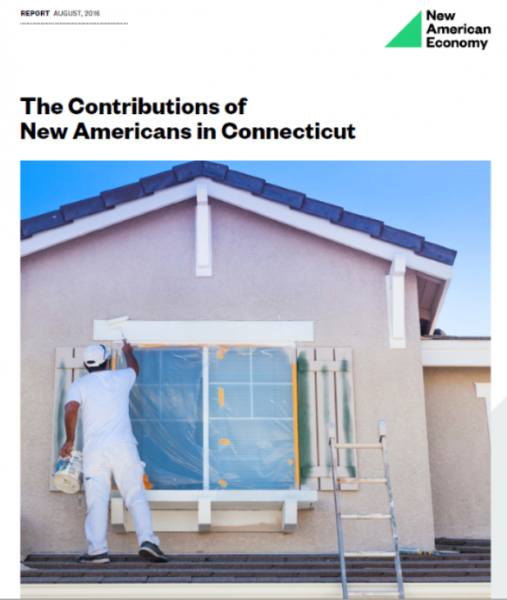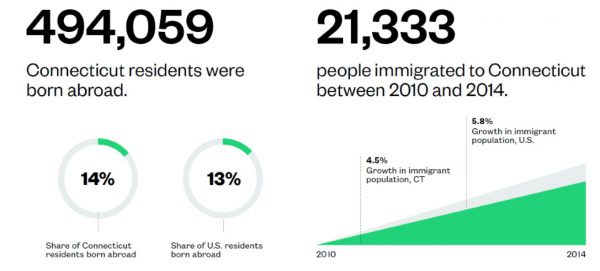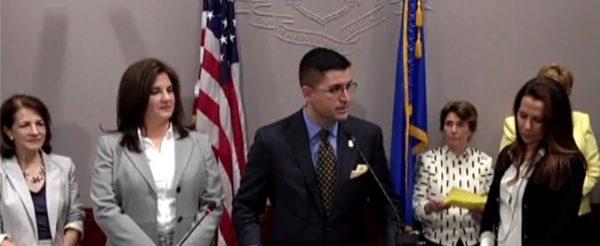CT's Water Plan Ready for Public Comment; Recommendations Advance to Legislature in 2018
/If you’re interested in Connecticut’s plans to manage a key natural resource – water – and might like to weigh in on what’s being considered, the window of opportunity to speak up has opened.
The state’s Water Planning Council (WPC) published a draft version of the State Water Plan last week, on the council’s website (www.ct.gov/water). They have also opened a public review period to provide Connecticut residents, businesses, and other stakeholders an opportunity to provide feedback before the Plan is finalized early next year. Comments will be accepted through November 20.
The draft plan recommends a framework for managing Connecticut’s water into the future and for “achieving balance with our many human and environmental needs as climate trends emerge and new needs develop,” according to officials. The plan addresses the quality and quantity of water for drinking, ecology, recreation, business, industry, agriculture, energy, and wastewater assimilation.
The WPC members stressed that the input of Connecticut’s citizens is crucial to the development and implementation of the plan to ensure it is fair and effective at balancing the needs of all water users while protecting a valuable resource. The council will hold public hearings on the draft plan across the state during late summer and fall, and they also plan to use technological resources to advertise and educate the public on the plan throughout this period. Comments on the plan can be filed electronically by the public.
Among the issues included is climate change. The draft plan states that “Climate change is likely to have a significant effect on potential flooding in Connecticut, and could also result in drier summers in the next 25 years. More work is recommended on coastal impacts, longer term effects (50 – 100 years), and basins at risk of not satisfying all future needs.”
The creation of the State Water Plan was required following the adoption of a state law, Public Act 14-163, which directed the WPC to formulate a plan that will help planners, regulators, and lawmakers make decisions about managing Connecticut’s water in a manner that is consistent throughout the state.
The WPC is comprised of four members: John W. Betkoski (Chair), Vice Chairman, Public Utilities Regulatory Authority; Garrett Eucalitto, Undersecretary, Office of Policy and Management; Betsey Wingfield, Bureau Chief, Department of Energy and Environmental Protection; and Lori Mathieu, Drinking Water Section Chief, Department of Public Health. The group’s draft plan reflects the input of various stakeholders, committee members and public participants. There is also an advisory board for WPC.
The plan highlights five key messages:
- Plan Function: The Plan is not an answer, but a platform for consistent, informed decision making.
- Maintain Highest Quality Drinking Water: The Plan reaffirms the state’s dedication to the highest standard of drinking water quality in the nation (Class A).
- Balance: Many river basins in Connecticut cannot satisfy all instream and out-of-stream needs all the time. The Plan offers ideas for understanding and improving this balance.
- Conservation: While Connecticut leads the nation in protections of drinking water quality, the State lags in its water conservation ethic. Outreach that builds on utility initiatives is one of the most important recommendations in this Plan.
- Maintain Scientific Data: The plan advocates for the collection and use of scientific data, as well as centralized access to it.
Details of the WPC’s public outreach efforts, information on how to comment, and links to other resources will be available in the coming weeks at www.ct.gov/water. They intend to present a final document to the Governor and various legislative committees in 2018. The WPC next meets on August 1 at 10 Franklin Square in New Britain.


 Rounding out the top 10 are Wisconsin, Iowa, New Hampshire, Louisiana, Rhode Island, Colorado, Nebraska and South Dakota. The states were ranked based on the most gyms using these four categories: total number of gyms, state population in 2016, people per gym, and gyms per capita (100,000 people). Totals were based on the 14 largest gym chains in America. There were more than 36,000 health clubs in the U.S. last year, up from 29,000 a decade ago.
Rounding out the top 10 are Wisconsin, Iowa, New Hampshire, Louisiana, Rhode Island, Colorado, Nebraska and South Dakota. The states were ranked based on the most gyms using these four categories: total number of gyms, state population in 2016, people per gym, and gyms per capita (100,000 people). Totals were based on the 14 largest gym chains in America. There were more than 36,000 health clubs in the U.S. last year, up from 29,000 a decade ago.
 The index publication is supported by the Anthem Blue Cross and Blue Shield Foundation. It is a scientific snapshot of the health and fitness status at a metropolitan level using data made up of personal health, community and environmental factors.
The index publication is supported by the Anthem Blue Cross and Blue Shield Foundation. It is a scientific snapshot of the health and fitness status at a metropolitan level using data made up of personal health, community and environmental factors.
 The region’s personal health rank was 13; its community/environmental indicators rank was 25, leading to an overall ranking of 13th. The analysis points to “Areas of Excellence,” in the region, including:
The region’s personal health rank was 13; its community/environmental indicators rank was 25, leading to an overall ranking of 13th. The analysis points to “Areas of Excellence,” in the region, including:

 since 1897. In 2015, Saint Francis became part of Trinity Health of New England, an integrated health care delivery system that is a member of Trinity Health, Livonia, MI, one of the largest multi-institutional Catholic health care delivery systems in the nation.
since 1897. In 2015, Saint Francis became part of Trinity Health of New England, an integrated health care delivery system that is a member of Trinity Health, Livonia, MI, one of the largest multi-institutional Catholic health care delivery systems in the nation.
 The
The 


 Only about 42 percent of motorcyclists in Connecticut wear helmets, according to Neil Chaudhary, PhD, leader of a Trumbull team of premier investigators on behavioral traffic safety-related issues at Preusser Research Group, Inc. In states where helmets are required, there is near 100 percent compliance, he recently told the Newtown Bee, adding professional driver training, offered throughout the state, can help riders to develop stronger defensive driving skills.
Only about 42 percent of motorcyclists in Connecticut wear helmets, according to Neil Chaudhary, PhD, leader of a Trumbull team of premier investigators on behavioral traffic safety-related issues at Preusser Research Group, Inc. In states where helmets are required, there is near 100 percent compliance, he recently told the Newtown Bee, adding professional driver training, offered throughout the state, can help riders to develop stronger defensive driving skills.





 ess to the issue of childhood drownings. Steven Hernández,, Executive Director of the Commission on Women,
ess to the issue of childhood drownings. Steven Hernández,, Executive Director of the Commission on Women,  The statistics about children’s drowning deaths have not changed over time, implying that current strategies for prevention are not enough, officials said. Increasing children’s access to swim lessons, encouraging schools to teach water safety skills to students and giving parents easy-to-use and engaging tools to talk to their children about how to be safe around water are just a few actions that can have a big effect in reducing drowning rates, officials stressed.
The statistics about children’s drowning deaths have not changed over time, implying that current strategies for prevention are not enough, officials said. Increasing children’s access to swim lessons, encouraging schools to teach water safety skills to students and giving parents easy-to-use and engaging tools to talk to their children about how to be safe around water are just a few actions that can have a big effect in reducing drowning rates, officials stressed.






















